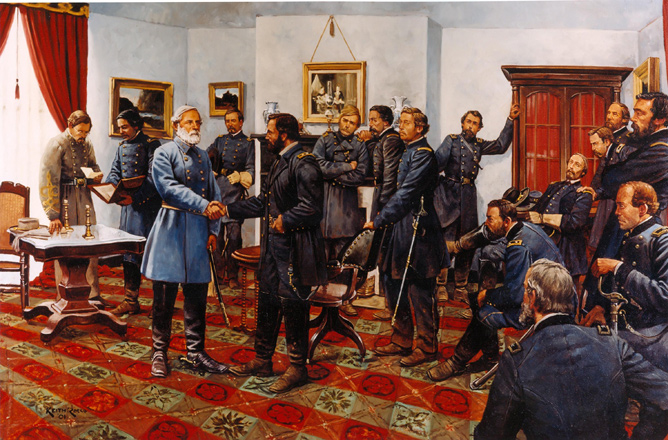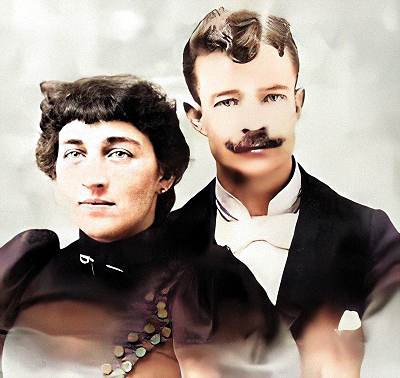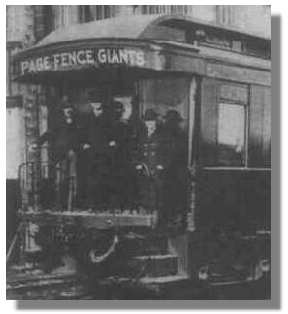t was nearly 50 years ago that blacks were forbidden from owning property in East Lansing, home of MSU. It’s hard to believe a city heralded for being the first community in the nation to have civil rights for gays, kept its doors closed to blacks until April 8, 1968, four days after the death of King and three days before the federal Fair Housing Act went into effect mandating fair housing nationwide.
The “movement” paled in comparison to the Selmas and Montgomerys. The efforts claimed local headlines and scathed across editorial pages of the college paper or the Towne Courier.
But the history of fair housing in East Lansing offers lessons.
For more information see Bill Castanier, “A house divided : The movement in East Lansing to open housing for blacks”, Lansing City Pulse, February 25, 2015
Lacey Holsworth, the eight-year-old girl who was battling cancer and was a special friend of MSU basketball center Adreian Payne, died on April 8. An Instagram post sent out by her Twitter account, @adorablelacey, announced the news: “Princess Lacey has achieved the ultimate victory. She now dances among angels….” Holsworth, who was nicknamed “Princess Lacey,” had been stricken with neuroblastoma in 2011. It is a rare form of cancer that spread to her spine and abdomen. During a hospital visit, Payne and fellow basketball players befriended her. She and Payne struck up a special friendship. Payne considered her a little sister, while she called him “Superman.” Lacey was Payne’s escort on Senior Night at the Breslin Center and attended games during the NCAA tournament. She also cheered her friend in the Final Four slam dunk contest in Dallas, where Payne finished in third place. The national media found Lacey’s story to be especially compelling and inspiring and in recent weeks it was covered extensively from coast to coast. “If there’s any way to go with dignity, she went (that way),” MSU Coach Tom Izzo told 730 AM The Game in Lansing. “Sad, but I’m also proud, if that makes any sense.” A memorial service was held for Lacey on April 17 at MSU’s Breslin Center.
Many people will always remember the link between Princess Lacey and the 2013-2014 MSU basketball team, not the Big Ten tournament championship, elite 8 finish, the victory over a number 1 ranked team, a number 1 seeded team, or the many injuries during the season.

For another article, see Ken Palmer, “One year later, students honor Lacey in tribute at MSU’s The Rock”, Lansing State Journal, April 8, 2015.
Jason King, “Remembering Lacey Holsworth: How 8-Year-Old with Cancer Captured America’s Heart“, Bleacher Report, April 24, 2014.

On April 9, 1865, Robert E. Lee’s Army of Northern Virginia surrendered Confederate arms and battle flags to two Michigan Regiments. Approximately 90,000 Michigan men had fought in the Civil War and 14,000 died.
Source: Michigan History
For more information, visit American Civil War-Beginning and End from Awesome Stories, including a film clip. Did you know … America’s civil war essentially started where it ended – in the backyard (and then in the parlor) of the same man, Wilmer McLean. Take a look at this piece of American (and Virginian) history.
On April 9, 1871, the most disastrous fire Alpena had seen destroyed the business district of the city. More than 100 residents were left homeless, and Alpena was left without a place for public entertainment or gatherings. A local newspaper reported on the impact of the fire: “Our city has received a severe loss, and one that it will take years to recover from.”
Source: Michigan Every Day
For a more detailed account, see History of Alpena County, pp. 234-235.
For more information about early Alpena, see The Town That Wouldn’t Die ; Alpena, Michigan By Robert E. Haltiner
Perhaps no other area of Detroit has changed more often and more drastically over the years than Campus Martius, the city center. Over the years, Old City Hall, the Majestic Building, the Pontchartrain Hotel, the Family Theatre, the Hammond Building and the old Detroit Opera House have all come and gone.
Only one landmark has outlived them all.

The Soldiers and Sailors Monument is among Detroit’s oldest pieces of public art and was one of the first monuments to honor Civil War veterans in the United States. It was announced by Gov. Austin Blair in 1865 that money would be collected to erect a tribute to Michigan’s soldiers killed in battle. Detroit, being the largest city, won the right to the monument.
The cornerstone for the monument was laid July 4, 1867, but not in Campus Martius, where the monument stands today: The original plan was to put it in the eastern half of Grand Circus Park. The previous year, the City Council granted permission to the Soldiers Monument Association to build the monument in either Campus Martius or East Grand Circus Park. After much debate, the latter was picked. Before the end of 1867, the argument over the site was renewed, leading the council to vote again, this time opting to relocate it in the center of Woodward Avenue between the halves of Grand Circus Park — also to much dismay. Finally, a special committee of the council resolved in September 1871 that the best place for the monument was the open square in front of City Hall.
The bronze and granite sculpture was formally unveiled on April 9, 1872, though some of its statues were not added until July 18, 1881. Among the military commanders of Civil War fame attending the ceremony were Gens. George Armstrong Custer, Ambrose Burnside, Philip Sheridan, Thomas J. Wood and John Cook. The estimates were that 25,000 visitors turned out for the event, and each of the state’s main cities was represented by a marching delegation. Detroit’s hotels could not accommodate the crowd and some people had to sleep on the floors of the halls and parlors of taverns.
The Classical Revival monument stands more than 60 feet tall and cost more than $75,000 ($1.3 million today) to build. It was sculpted by Randolph Rogers, an Ann Arbor native who studied at the Academy of St. Mark in Florence, Italy, under Lorenzo Bartolini. Rogers won the commission after a public competition in 1867. He also is known for the bronze doors for the U.S. Capitol’s main entrance and created monuments like the Sailors and Soldiers in other cities. For this commission, Rogers modeled the sculptures in Rome and had the bronze cast in Munich, Germany.
Its body is made of Rhode Island granite; its figures are cast of bronze and rest on octagonal tiers. The bottom has four screeching eagles with outstretched wings, symbolizing America and freedom. Above that are four 900-pound statues that represent the four U.S. branches of the military: infantry, artillery, cavalry and the Marines. Behind them are bronze medallions of Civil War union leaders President Abraham Lincoln, Gen. U.S. Grant, Gen. William Tecumseh Sherman and Adm. David Farragut. The next tier has four allegorical figures representing Victory, Union, History and Emancipation.
Topping off the monument is a 3,800-pound personification of a victorious Michigan as an Indian queen in a winged helmet, brandishing a sword in her right hand and a shield in her left. She depicts Michigan as being strong, proud and brave. The personification of Michigan is similar, though more aggressive, than the one on the Russell A. Alger Memorial Fountain in Grand Circus Park.
Below the Indian queen is an inscription that reads:
“Erected by the people of Michigan in honor of the martyrs who fell and the heroes who fought in defence of liberty and union.”
One of the figures on the monument is of a black woman, representing Emancipation. She crowns the soldiers and sailors with wreaths, representing gratitude for emancipation and is said to have been inspired by Sojourner Truth. But there is no recognition of this in the account of the unveiling of the monument, nor in Lorado Taft’s comment on the monument in his history of American sculpture.
The structure was added to the state register of historic sites Feb. 17, 1965. It joined the National Register of Historic Places on May 31, 1984.
For the full article, see Dan Austin, “Soldiers and Sailors Monument“, HistoricDetroit.org, 2018
Hugo (Hughie) Cannon was born in Detroit, Michigan, to actors John S. Cannon and May Brown on April 9, 1877, some seven months after their Illinois marriage.
Beginning around 1901, Cannon’s story was closely tied with Jackson, Michigan, about 80 miles due west of downtown Detroit. There he quickly gained a reputation as a likable and stellar ragtime pianist. Jackson was considered to be a rather rough railroad town, and was sometimes referred to as “Little Chicago.” The Michigan Central Railroad kept one of their major satellite repair shops there, and an average of 3,000 railroad employees either lived or lodged around Jackson at any one time. The 1900 City Directory lists 75 saloons around the downtown area, so there were plenty of opportunities for Hughie to play, and to drink his wages.
 |


Before the creation of the first Negro National League (NNL) in 1920, many professional and semi-professional African American teams took to the ball field, giving hundreds of men the chance to earn their livelihood by playing baseball. One of the best of these clubs, the Page Fence Giants, found a home in Adrian, Michigan, not far from Detroit, in 1895. Made up of crack players, including some of the biggest stars of the day, the Giants took part in a number of memorable games — most of them resounding victories for Page Fence — on their way to a self-proclaimed colored championship.
In 1894, The Local Light Guard Armory in Adrian worked hard to put a solid nine on the baseball diamond. Under manager L. A. Brown and team president Rolla Taylor, the Light Guard club came together to give the Adrian fans something to cheer about as a mix of veterans, like veteran catcher Henry Yalk, and newcomers, including soon to-be ace George Wilson, brought baseball to the city. Wilson, from Palmyra, Michigan, was only 17 years old, but he would lead the team to victory after victory, pitching with a confidence and maturity beyond his years. His first win, in late July 1894, was a 12-2 victory over nearby Hudson, Michigan’s nine was a preview of things to come.
Against a strong contingent from Findlay, Ohio, the Light Guard Armory team fared less well, losing 19-9 and 6-0. But the series would eventually be counted a success, as it brought them into direct contact with Findlay’s star second baseman, Bud Fowler. Fowler had helped his club beat the Detroit Tigers twice, and in the process had gained a national reputation. Announcing plans to relocate to Adrian in 1895, joining former teammate Doug Underwood, Fowler told local reporters that his new Cuban Giants team would play at Lawrence Park, after some necessary repairs were made. Fowler wanted to have his team play in Findlay, he said, but was not able to secure the needed backing for the team.
Local sports promoter Len Hoch saw Fowler’s plan as a great way to talk up the small town of Adrian. Hoch agreed to put up part of the $500 needed to finance the new ball club. Both Hoch and Fowler wanted to develop a team that had a national reputation, which meant the team would need to travel a great deal. To accomplish their travel Fowler wanted the team to have its own railroad car. Additionally, for the club to be a success, on and off the field, Fowler believed pitcher George Wilson would be a central cog. The other key would be attracting future Hall of Famer Grant Johnson to Adrian from Findlay.
On September 20, 1894, the local papers announced, “Bud Fowler’s scheme has finally materialized.” The Page Woven Wire Fence Company saw this new venture as a great advertising opportunity for their fences and became the team’s primary sponsor. They put their name on the railroad car the team traveled in and their initals on the jerseys of the club’s black and maroon uniforms. In addition to securing a sponsor, Fowler succeeded in persuading Johnson and Wilson to join this new club. The team would go on to barnstorm around the midwest.
According to wikipedia, the team played it’s first game on April 9, 1895.
n May 1895, the Page Fence Giants rolled into Kalamazoo for the first time to begin a best-of-three series against the state league Kazoos at the North Street ballpark, and true to form, they beat the local team rather badly in the process. “The [third] game was a hot one from the start,” stated a reporter for the Telegraph, “and although it went deservedly to the hard hitting visitors, it was by all odds the prettiest one put up here this season.”
“Nine chocolate colored ball players, traveling under the name of the Page Fence Giants, in a private car, have been making a tour of the central states, demonstrating to the Western, National and minor league ball players that the latter knew nothing of how the game should be played. St. Paul, Cincinnati, Grand Rapids, Dubuque and others had succumbed to African muscle and brains, and yesterday Kalamazoo’s scalp was added to the already big stock of cappilaceous relics… (the Giants) rubbed the rich celery earth of the league grounds deep into the hides of the local players…” —Kalamazoo Daily Telegraph, 16 May 1895
To help generate crowds when they arrived in a city, the players dressed in their railroad car and then paraded to the ball field riding on 12 monarch bicycles purchased from William S. Sheldon, owner of the Monarch Bicycle Company, another of the team’s sponsors, while fans followed them to the ball diamond. The Giants traveled in style. Their 60-foot car had sleeping areas as well as their own porter and cook so as to avoid the hassles of having nowhere to sleep or eat on the road in Jim Crow America. Fowler believed this was necessary since they had no home ball park (Lawrence Park, in Adrian, was also used by the Demons, also known as the Reformers, in 1895) and consequently spent most of their time on the road.
As was so often the case with early black teams, even when successful on the field, the Page Fence club ran into financial difficulties, leading them to reorganize in 1899, when they began the season as the Columbia Giants, sponsored by the Columbia Club of Chicago. They found themselves playing an early game in Racine, Illinois, where they picked up a new player named John Brown. Despite the reorganization, local papers continued to refer to the barnstorming team as “Page Fence” or as the “former Page Fence Giants,” no doubt believing their readers were familiar with the team and its reputation for strong play As late as 1903, in fact, after the Page Fence Giants had been gone for five seasons, some papers still referenced the early championship squad.

One of the premier professional colored teams in the 1890s, and the first to appear in the Midwest, the Page Fence Giants demonstrated early that black baseball could succeed outside of the East Coast, where teams such as the Cuban Giants and X-Giants had flourished in part because of the large fan bases found in cities along the seaboard. While there are still many gaps in the record of the Giants, the skeletal record provided in this article supports their claim to be the champions of black baseball in 1895 and 1896. Beating both the Chicago Unions and the Cuban X-Giants in head-to-head series, taking games against Western Association and Western League clubs, and trouncing many of the smaller, unaffiliated teams of the East and West, Page Fence dominated the competition and, barnstorming their way across multiple states, expanded the footprint of black baseball.
Sources:
Lelie Heaphy, “The Page Fence Giants: Nineteenth Century Champions. Black Ball 5.1 (Spring 2012): 76-83.
Page_Fence_Giants wikipedia entry
Page Fence Giants 1894-1898, courtesy of the Negro League Baseball Players Association.
Richard Bak, “Giants of Adrian may have been best baseball team in Michigan in the 1890s”, Detroit Athletic Club, February 11, 2012.
Baseball in Kalamazoo: Black Teams – Kalamazoo’s Early African American Baseball Teams, courtesy of the Kalamazoo Public Library.
The Page Fence Giants : a history of Black baseball’s pioneering champions / Mitch Lutzke. Jefferson, North Carolina : McFarland & Company, Inc., Publishers, 2018.

According to the Warren-Cramlon Law of 1909, no city should have more than 1 bar per 500 residents. According to the latest census, Detroit should have no more than 1000 bar rooms, but in fact has 1550 bar licenses. And there is no indication the number will go down since there have already been more applications this year than in 1911.
REDUCE THE SALOON NUMBERS HERE. Detroit Free Press, April 9, 1912.
BAD BARS TO CEASE EXISTENCE: HERMAN WARTELL’S “ANNEX” AND SIMILAR NOTORIOUS SALOONS WILL BE PUT OUT OF BUSINESS BY COUNCIL COMMITTEE. REFUSE LICENSE NO MATTER WHO ASKS ALDERMEN DETERMINED TO EXCLUDE PLACES OF EVIL REPUTATION, DESPITE CHANGES OF NAME, OF OSTENSIBLE APPLICANTS. Detroit Free Press, April 9, 1912.
Other news from the Detroit Free Press, April 9, 1912:
WOMEN TALK TOO MUCH: BOSTON DOCTOR SAYS CHATTER MAKES THE DEARS NERVOUS.
GIRL’S PARENTS FOIL ELOPERS: INDIANAPOLIS SWEET 16 AND U. OF M. GRADUATE TRIPPED ON LICENSE AT ST. JOSEPH.
TAKES HAIR TONIC FOR COLD: (ASSISTANT PROSECUTOR) “WILLIE” HESTON SWALLOWS RESTORER BY MISTAKE; GOES HOME ILL!.
Note : The Main Library now provides the MSU community online access to the historical Detroit Free Press from 1858 through 1922.
On April 9, 1948, Michigan State College President John Hannah announced that no groups or individuals on the campus are admitting that they are Communists. Hannah and S. E. Crowe, dean of students, were subpoenaed by state Sen. Matt Callahan (R-Detroit) to appear before his Michigan Senate Un-American Activities Committee, which conducted its meetings behind locked doors, and only allowed a few reporters to attend. (The Michigan Attorney General was barred.)
Hannah stated communists could not be barred from enrolling because MSC does not ask political affiliations on applications for enrollment. Since the state of Michigan recognizes communist candidates on its election ballots, MSC is not going to ban any such group, but since a group would have to get faculty sponsorship, it was unlikely any such group would ever form.
Crowe said the Spartan Citizens League, formed a year ago when the American Youth for Democracy was banned on campus, contained some “liberal thinkers.” As far as college authorities are able to determine, he, said, the meetings are mostly concerned with “long hair” art, music and literature.
Sources:
MIRS News Service.
“Official Says MSC Has No Known Reds”, Detroit Free Press, April 10, 1948, p.4.
Owen C. Deatrick, “No Danger of Red Groups Starting at MSU, Hannah Says”, Detroit Free Press, April 13, 1948, p. 14.
The Red Wings closed out its 38-year residency at Joe Louis Arena with a 4-1 victory over the New Jersey Devils in front of 20,027 raucous fans, who hurled a reported 35 octopuses on the ice during the game – a unique Red Wings tradition that dates to the early 1950s.
For the full article, see Bill Shea, “Red Wings, under a flurry of octopuses, bid farewell to Joe Louis Arena with 4-1 win over Devils“, Crain’s Detroit Business, April 9, 2017.
Dan Holmes, “19 Reasons We’ll Always Remember The Joe“, Detroit Athletic Company Blog, April 8, 2017.